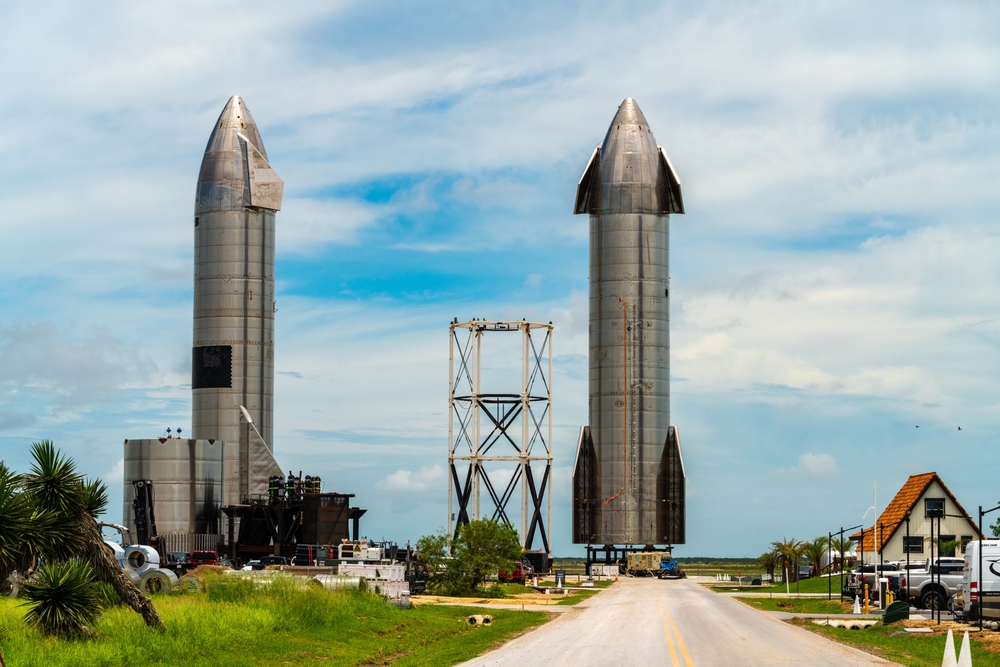As humanity sets its sights on deeper regions of space, the need for advanced spacecraft has never been greater. These next-generation designs push the boundaries of technology, enabling missions that were once thought impossible. From exploring distant planets to venturing beyond our solar system, these innovative spacecraft are key to unlocking the mysteries of deep space.
Contents
Orion Multi-Purpose Crew Vehicle (MPCV)

The Orion MPCV is at the forefront of human deep space exploration. Designed by NASA to carry astronauts beyond low Earth orbit, it’s a versatile spacecraft that will take crews to the Moon, Mars, and beyond. With its advanced life support, radiation protection, and thermal control systems, Orion is built to sustain long-duration missions. Its high-tech navigation and propulsion systems make it essential for safely transporting humans on deep space missions, setting the stage for future interplanetary exploration.
Space Launch System (SLS)

The Space Launch System is NASA’s most powerful rocket, engineered to propel heavy payloads beyond Earth’s atmosphere, making it critical for deep space exploration. With the ability to carry the Orion spacecraft and other cargo into deep space, SLS is key to missions to the Moon, Mars, and beyond. Its enormous thrust capability allows it to transport essential equipment, habitats, and even astronauts, making it the backbone of future manned space exploration.
Starship

SpaceX’s Starship is a game-changer in space exploration due to its fully reusable design, aimed at carrying humans to Mars and other distant destinations. With a payload capacity of over 100 tons, it will be able to transport large crews and heavy equipment. Starship’s capability to refuel in space and its potential for long-duration missions make it central to Elon Musk’s vision of Mars colonization, promising affordable, sustainable deep space travel.
Lunar Gateway

The Lunar Gateway is a space station planned by NASA to orbit the Moon and serve as a staging point for deep space missions. This modular space station will support crewed lunar landings and long-term missions to Mars. It will offer astronauts a place to live and work, serving as a hub for scientific research and refueling spacecraft, playing a pivotal role in the future of deep space exploration.
New Horizons

Launched by NASA, New Horizons provided the first up-close look at Pluto before continuing its journey into the Kuiper Belt. As one of the fastest spacecraft ever built, it has already sent back groundbreaking data on Pluto’s surface and continues to explore the distant reaches of our solar system. Its longevity and ability to venture far beyond Pluto make it a remarkable deep space probe.
Voyager 1 and 2

These iconic NASA spacecraft, launched in 1977, have become the first human-made objects to enter interstellar space. Both probes have traveled farther than any other spacecraft, providing invaluable data about our solar system’s outer planets and now the space beyond it. Their longevity and groundbreaking discoveries continue to influence our understanding of the universe.
Juno

NASA’s Juno spacecraft is currently orbiting Jupiter, revealing new insights into the planet’s atmosphere, magnetic field, and inner structure. Its close-up observations of the gas giant’s poles and magnetic field have helped scientists understand the planet’s formation and composition, making it essential to our knowledge of the solar system’s largest planet.
Perseverance Rover

NASA’s Perseverance Rover is currently exploring the surface of Mars, searching for signs of ancient microbial life. It’s equipped with the most advanced scientific instruments ever sent to the Martian surface, including a helicopter drone and a device to produce oxygen from the Martian atmosphere. Perseverance’s mission is critical for the eventual human exploration of Mars.
Europa Clipper

NASA’s Europa Clipper mission aims to investigate Jupiter’s icy moon, Europa, which scientists believe could harbor an ocean beneath its frozen surface. With advanced imaging and spectrometric tools, the spacecraft will study the moon’s ice shell and subsurface, making it a key player in the search for extraterrestrial life within our solar system.
James Webb Space Telescope (JWST)

The JWST is the most advanced space telescope ever built, designed to peer deep into the universe to observe stars, galaxies, and planets with unprecedented clarity. Its infrared capabilities allow it to see further back in time, revealing the formation of the first galaxies and stars, making it essential for deep space astronomy and our understanding of the cosmos.
Dragonfly

Dragonfly is an upcoming NASA mission that will send a drone to Saturn’s moon Titan, an enigmatic world with a dense atmosphere and methane lakes. Dragonfly will be able to fly between different sites on Titan, exploring its surface in detail and gathering data on its chemical composition, helping us understand prebiotic chemistry and the potential for life.
OSIRIS-REx

OSIRIS-REx is NASA’s mission to collect and return samples from asteroid Bennu. It’s the first U.S. mission to retrieve asteroid material and bring it back to Earth, offering clues to the solar system’s formation. Its successful sample collection and return will provide scientists with the best-ever insights into the building blocks of planets and life.
Mars Sample Return Mission

A joint NASA-ESA mission, the Mars Sample Return Mission will bring soil samples from Mars back to Earth for detailed analysis. This mission is essential for understanding whether life ever existed on Mars and preparing for future human exploration by providing valuable data on Martian geology and climate.
Parker Solar Probe

NASA’s Parker Solar Probe is flying closer to the Sun than any spacecraft before, studying its outer atmosphere and solar wind. Its revolutionary heat shield allows it to withstand extreme temperatures, making it an invaluable tool for understanding the Sun’s impact on the solar system’s space weather.
Lucy

NASA’s Lucy mission is designed to study the Trojan asteroids that orbit in Jupiter’s path. These ancient remnants from the early solar system can provide key insights into the formation of planets. Lucy’s long-term mission will help scientists understand the building blocks of the solar system’s planets.
DART (Double Asteroid Redirection Test)

The DART mission is a planetary defense demonstration aimed at testing our ability to deflect asteroids. By intentionally crashing into a small asteroid, DART will assess the feasibility of changing an asteroid’s course, an important step in preventing potential future impacts on Earth.
SPHEREx

NASA’s SPHEREx mission will create a 3D map of the universe using infrared technology to study the birth of galaxies and the formation of stars. By surveying the entire sky, SPHEREx will provide valuable data on how the universe evolved, making it a critical mission in cosmic exploration.
This article originally appeared in MyCarMakesNoise.
More from MyCarMakesNoise
10 Fascinating Facts About High-Speed Bullet Trains

High-speed bullet trains have transformed the way we think about travel, offering an efficient, comfortable, and sustainable alternative to traditional transportation methods. These marvels of modern engineering have significantly shortened travel times between major cities, making long-distance commuting more feasible and boosting economic productivity. Read More
15 Money-Saving Car Maintenance Tips You Need to Know

Maintaining your car doesn’t have to be expensive or complicated. With a few simple and regular maintenance practices, you can keep your vehicle running smoothly and avoid costly repairs. Read More
20 Consequences of Not Using Your Car’s Air Conditioning

Not using your car’s air conditioning for extended periods can lead to several issues that affect both the system’s functionality and your vehicle’s overall comfort. Over time, seals and hoses in the AC system can dry out, leading to leaks and reduced cooling efficiency. Read More














